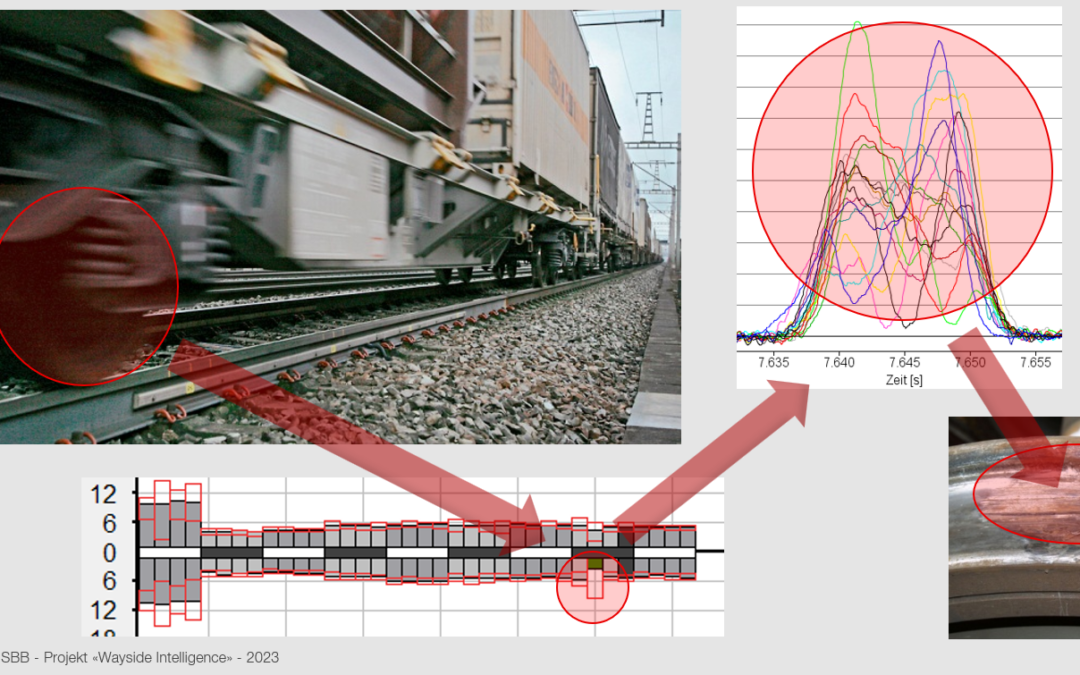The fixed train control systems for goods trains and their rolling stock are constantly being refined. The digital control system Wayside Intelligence (WIN) not only increases safety in rail freight transport, but also helps wagon keepers to plan their maintenance work more efficiently. It is therefore all the more important that they contribute their experience to the further development of the system.
That’s what it’s all about:
- Maintenance of rolling stock: central to safety
- Complex checks between regular maintenance appointments
- Digitalisation increases predictability
- Targeted use of data from the infrastructure manager
- Maintaining the state of the art and planning with foresight
- Testing and further developing WIN
Maintenance of rolling stock: central to safety
Wagon keepers are responsible for the proper maintenance of their vehicles, as required by the current Safety and Interoperability Directive. In doing so, they make a significant contribution to safe rail transport (see blog article «Gotthard Base Tunnel (#2): Automatic train control systems»). The central element is the periodic maintenance of wagons by certified specialist workshops (Entity in Charge of Maintenance, ECM). These are commissioned by the keeper. Based on operating experience, the common safety objectives and methods, those responsible should schedule the scheduled workshop visits of the rolling stock in such a way that the safety-relevant components, assuming expected wear and tear, have a degree of wear and tear suitable for operation according to general experience and the normal course of events until the next periodic workshop visit.
Extensive checks between regular maintenance appointments
However, several years pass between two regular workshop visits. In daily freight transport, the railway undertakings (RUs) and infrastructure managers are responsible for the safe operation of freight wagons. Before the trains depart, the RUs inspect all wagons for visible damage and defects in the loads. Damaged wagons are stripped and sent for unscheduled maintenance in accordance with the General Contract of Use for Freight Wagons (GCU). Such extraordinary manoeuvres disrupt the planned operating schedule, can lead to delays and mean extra work and loss of income for the affected rail transport companies.
Digitalisation increases predictability
To enable keepers to better fulfil their responsibility for the operational suitability of their wagons in operation in future, they are obliged to document all maintenance measures and to evaluate the experience gained during maintenance. For the ongoing evaluation of their maintenance plans, they need reliable technical data on the behaviour and current degree of wear of system-relevant components. Thanks to advancing digitalisation, this data is increasingly available to them.
Targeted use of data
The Swiss standard-gauge network is equipped with stationary train control systems operated by the infrastructure manager SBB Infrastructure (SBBI). This system is called Wayside Intelligence, or WIN for short. It records safety-relevant measured values from every passing train. The focus of these checks is on operational safety and the prevention of incidents. Unacceptable deviations lead to the train being stopped promptly and the defective or incorrectly loaded wagon being discarded if necessary.
Wagon keepers can also use this continuously recorded data with little initialisation effort to obtain a real picture of the condition of system-relevant components in their wagons. To do this, they must equip their wagons with an RFID tag (EN 17230) and set up an interface for data transmission that is coordinated with the SBBI, for example via an application programming interface API web-based GUI.
Maintaining the state of the art and planning with foresight
SBBI can currently transmit the recorded data on the wheelset condition of its identified wagons to every registered keeper. The keeper can configure the data flow according to their needs. The change in the dynamic wheel load coefficient over time provides a reliable picture of the wear development of the wheel tread. The collected data allows the wagon keeper to continuously develop the maintenance plans so that he can always maintain the state of the art. In addition, he can initiate an extra-periodic maintenance measure with foresight, without the need for an unscheduled outage.
Testing and further developing WIN
Development work is currently underway to automatically evaluate the images captured by the camera system at the ZKE site for systematic analysis and comparison of operating data. The aim is to recognise anomalies in the braking equipment and running gear during operation. Interested parties from freight railways and wagon keepers can actively contribute to the development of this system by sharing their information requirements and participating in tests. Interested parties should contact:
Jörg Bisang
SBB AG, Train Control Units
+41 79 698 22 41
joerg.bisang@sbb.ch

